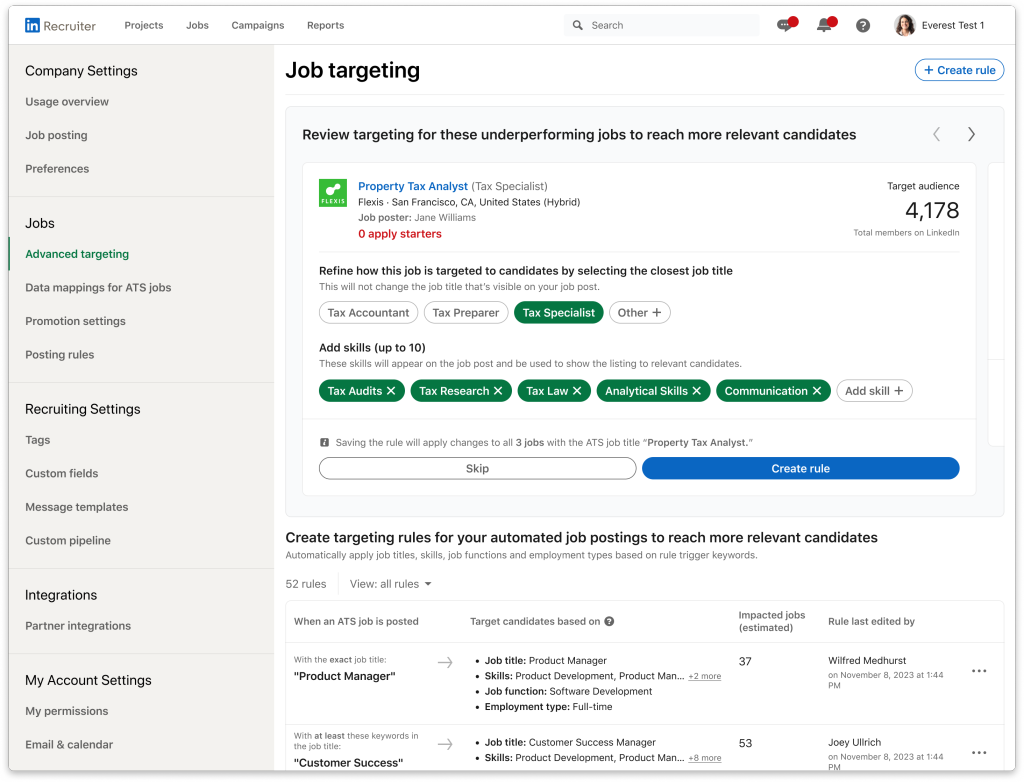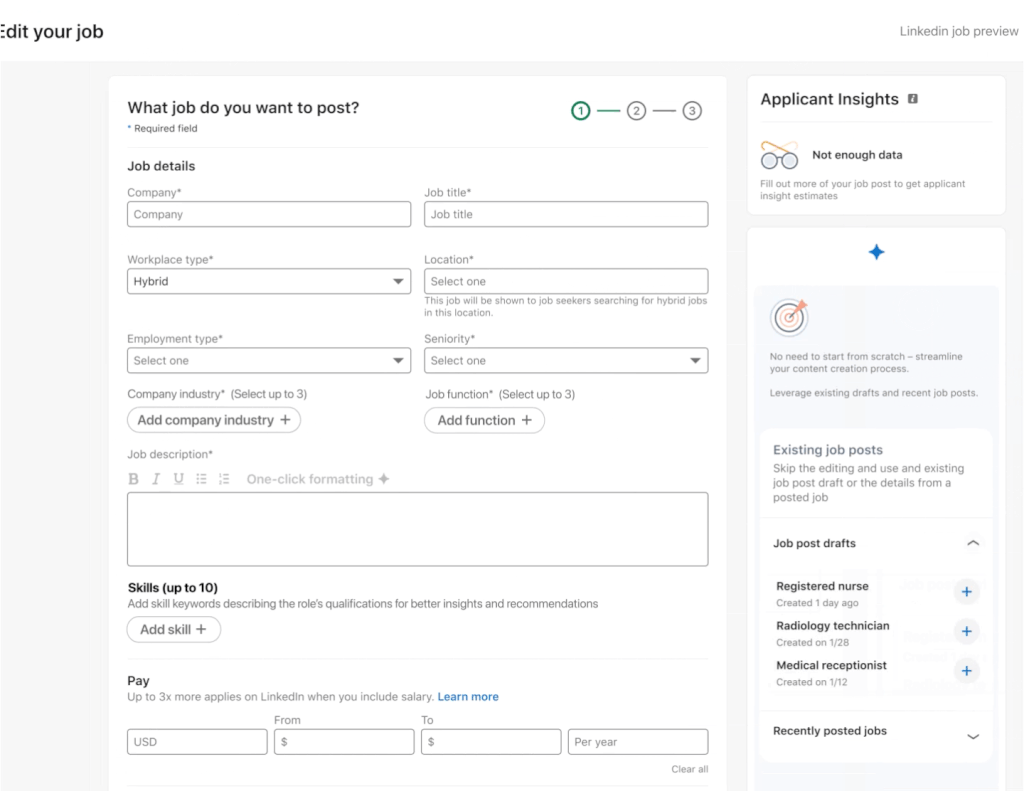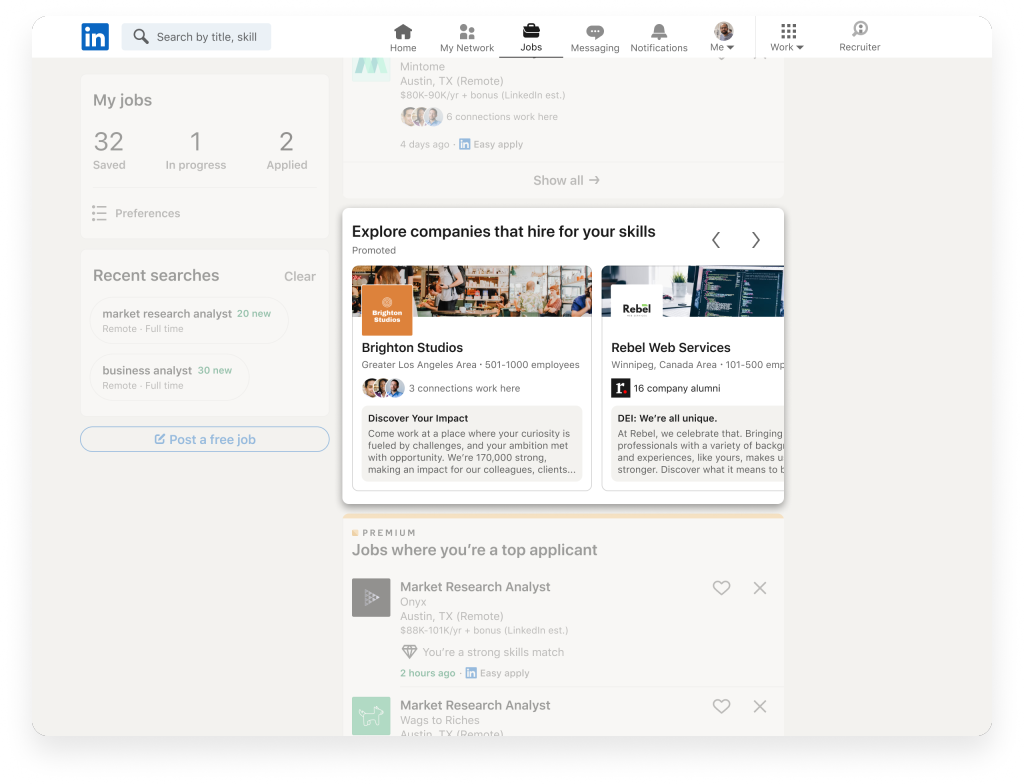While recruiting continues to evolve, the top priority for talent acquisition remains the same: Hire qualified candidates — fast. At Talent Connect 2023, we announced Recruiter 2024, our new AI-assisted recruiting experience to help talent acquisition professionals do just that.
Over the last few months we’ve started to roll out major AI-powered innovations to help recruiting teams source more efficiently and effectively — and we’re already seeing results. Candidate outreach messages drafted — and personalized — with AI-Assisted Messages saw a 40% increase in InMail acceptance rates compared with non-AI-assisted messages. And recruiters who enabled Automated Follow-Ups saw a 39% increase in accepted InMails compared with those who manually followed up.
We also began rolling out AI-Assisted Search and Projects in Recruiter, which allows customers to enter their hiring needs in their own words. AI-Assisted Search and Projects will help you create projects, search for candidates, and give insights-backed recommendations to uncover even more qualified candidates.
But we know finding the right candidate requires a holistic approach across the recruiting funnel. That’s why over the next six months we plan to bring even more capabilities to Jobs, Employer Brand, and Recruiter as part of our 2024 LinkedIn Hiring Release. The goal: Help recruiting teams improve efficiency across their recruiting funnels and find the best talent for their roles. Here’s what you can expect this year:
Reach more relevant candidates with AI-Assisted Jobs
Reaching relevant applicants begins with precise targeting, but many talent teams don’t have the time or expertise to set targeting for every job.
AI-Assisted Job Targeting is designed to help solve this challenge, providing insights-based recommendations to refine skill- and title-based targeting for jobs to help job posts perform better. Recommendations can be quickly reviewed, accepted, and used to set a rule that can be applied to the same job titles moving forward. The end result: Jobs will be targeted to more of the right candidates, improving the quality of your applicant pool.

AI-Assisted Job Posting will also offer market-informed targeting suggestions, like skills and location recommendations, to expand talent pools for manually posted jobs. To further save talent teams time, AI-Assisted Job Posting offers one-click job post formatting to improve readability.

Get in front of active job seekers with a new employer brand placement
Employer branding will remain a critical priority in the year ahead. For the second year in a row, employer branding is the recruitment function that’s expected to receive the greatest increase in spend, with 57% of recruiting pros predicting their investment in employer branding will increase in the coming year. Companies are increasingly looking for ways to attract and engage in-demand talent.
Promoted Company Discovery enables you to showcase your organization’s brand on the LinkedIn Jobs tab, where millions of active job seekers are looking for new opportunities. The LinkedIn Jobs tab is one of the most highly trafficked pages on LinkedIn, presenting an enormous opportunity for talent teams to reach motivated candidates at scale. Promoted Company Discovery Ads will drive traffic to your Company Page’s Life tab to spotlight your organization’s culture.

Benchmark performance to inform your hiring strategy
Data and insights are essential for building winning hiring strategies. But it can be difficult to understand the “so what” behind reporting data and whether a given metric is good or leaves room for improvement.
With Benchmarking in Recruiter, you will be able to compare key hiring metrics for InMail, Jobs, and Usage across industries and company sizes. These deeper, actionable insights will help you demonstrate the success of your recruiting efforts and refine your hiring strategy.

To be successful in today’s market, talent teams need to adapt — and so do their hiring tools. These updates are just some of the new functionalities coming to LinkedIn in 2024.
This post was originally published on LinkedIn





